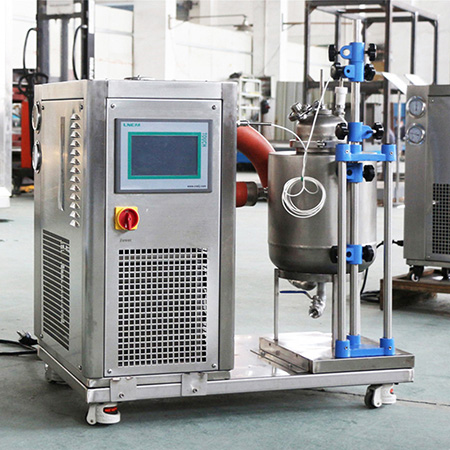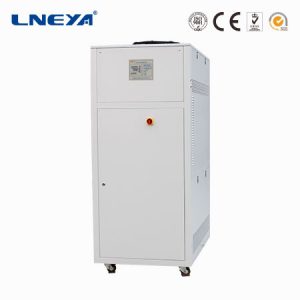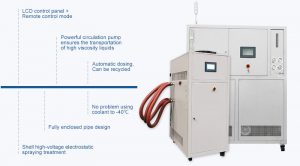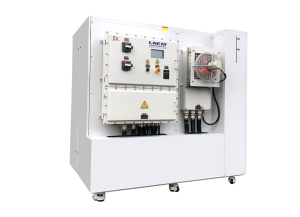伝熱オイル制御システム装置伝熱オイルコークスはなぜ存在するのか?
In the heat transfer oil control system device, the heat transfer oil is used for the cooling and heating temperature control. If it is not the same as the LNEYA, the use of the fully closed circuit can affect the formation of certain coking, resulting in failure.
In the heat transfer oil control system device, three main chemical reactions occur in the heat transfer process: thermal oxidation reaction, thermal cracking and thermal polymerization. Coking occurs from thermal oxidation reactions and thermal polymerization reactions. The thermal polymerization reaction occurs because the heat transfer oil is heated during the operation of the heating system, and the reaction generates macromolecular high-boiling substances such as condensed aromatic hydrocarbons, colloids and asphaltenes, which are gradually deposited on the surface of the heater and the pipeline to form coking.
The thermal oxidation reaction of the heat transfer oil is mainly caused by the heat transfer oil in the expansion tank of the open heating system contacting the air or participating in the circulation, and the reaction generates low-molecular or high-molecular acidic components such as alcohol, aldehyde, ketone, acid, etc., and further generates Glue, asphaltene and other viscous substances, then form coking; thermal oxidation is caused by abnormal conditions, once it occurs, it will accelerate thermal cracking and thermal polymerization, so that the viscosity increases rapidly, heat transfer efficiency decreases, causing overheating and furnace tube Coking. The resulting acid can also cause corrosion and leakage of equipment.

The heat transfer oil control system device heat transfer oil will form a heat insulation layer during use, resulting in a decrease in heat transfer coefficient, an increase in exhaust gas temperature, and an increase in fuel consumption. On the other hand, since the temperature required for the production process remains unchanged, The heating temperature rises sharply, causing cracks, causing serious accidents such as equipment and operator personal injury.
In the heat transfer oil control system device, if the heat transfer oil has a coking failure, the heat transfer oil control system device will be unavailable, and the heat transfer oil control system device is required to perform certain maintenance work.
(This article is from the source network. If there is any infringement, please contact LNEYA for deletion, thank you.)
関連推奨品
-
グリコールチラーの動作原理
1145エチレングリコールの水溶液を使用する低温のスリラーのために、私達はそれをグリコール・チラーと呼ぶ。その出口の水温は一般に- 10 ℃の下にあり、特定の温度の条件はユーザーの必要性に then 服従しなければなりません。グリコール・チラーar...
詳細を見る -
超低温チラー冷凍システムのメンテナンス方法
1051超低温冷凍機とは、冷水温度がマイナス35℃以下になる冷凍機を指す。二段圧縮冷凍を採用し、スクロールコンプレッサーとピストンコンプレッサーの組合せを採用しています。
詳細を見る -
液冷バッテリーパックのBMSテスト用冷却水循環装置
994気温が徐々に上昇するにつれ、液冷式バッテリーパックBMS試験用冷却水循環器の使用も徐々にピークに達する。液冷式バッテリーパックBMS試験用冷却水循環器の定格出力は...
詳細を見る -
 LNEYA工業用冷凍機 メーカー サプライヤー
LNEYA工業用冷凍機 メーカー サプライヤー













